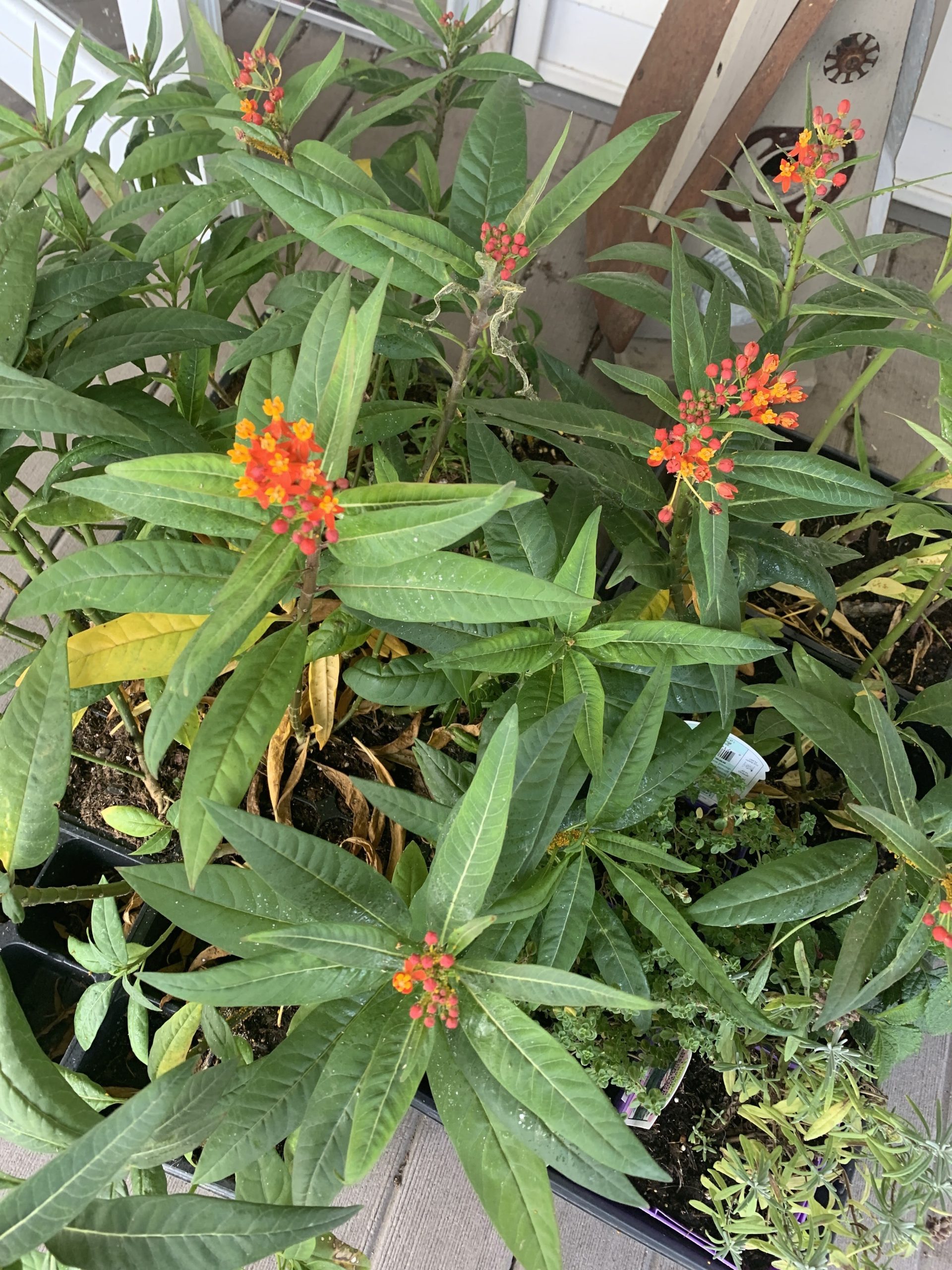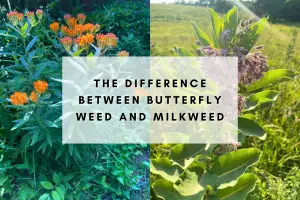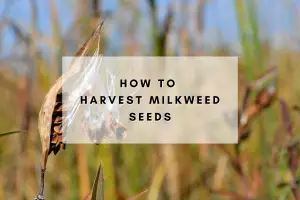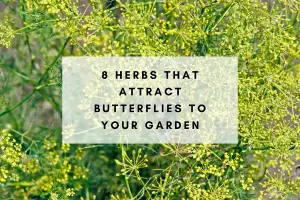Growing milkweed is the holy grail of butterfly and pollinator gardening, and this guide will answer the most asked questions about our favorite plant!
What is milkweed and why is it important?
Milkweed is a perennial plant native to North America. There are over 100 types of milkweed.
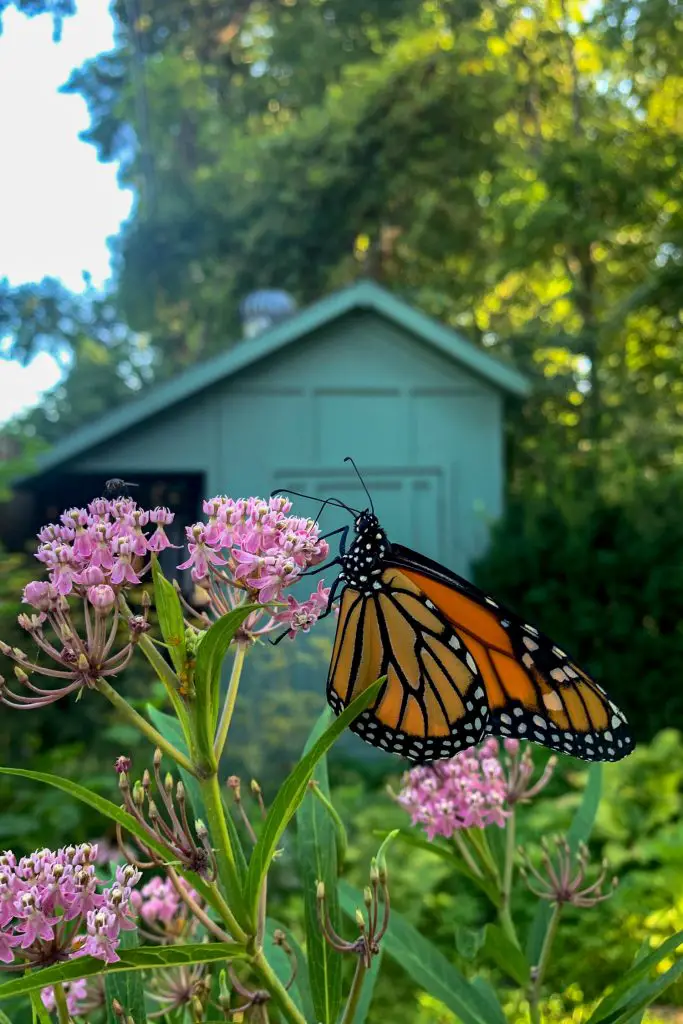
It’s an important plant because it’s the only host plant that monarch butterflies lay their eggs on. Milkweed is also the only plant that monarch caterpillars feed on. Gardeners love this plant because it brings monarch butterflies to their gardens and planting milkweed helps save the pollinators and encourages a more balanced ecosystem.
Planting more milkweed is encouraged because a lot of naturally growing milkweed has been decimated. Even my dad rolled his eyes when my mom started planting it everywhere – saying “weed” is in the name, why are we planting weeds? Turns out this is one weed you want to keep around!
Farming, parks, modern lawn maintenance and pesticides and herbicides greatly reduce the growth of milkweed. With monarch populations declining, milkweed is more important than ever. Without milkweed, the monarch species won’t survive.
You can find milkweed in a variety of habitats, including prairies, meadows, and along roadsides. Other pollinators also love milkweed’s flowers, making it an essential part of a butterfly garden or pollinator garden!
Our family started raising butterflies when my mom found a monarch caterpillar on a common milkweed leaf on the side of the road while picking wildflowers for my sister’s wedding. Since then, we’ve raised hundreds of caterpillars and released just as many butterflies! And become obsessed with pollinator gardening!
What are the different species of milkweed?
There are over 100 different species of milkweed. Some common types of milkweed in Missouri include:
- Common milkweed (Asclepias syriaca)
- Swamp milkweed (Asclepias incarnata)
- Butterfly weed (Asclepias tuberosa)
- Showy milkweed (Asclepias speciosa)
- Poke milkweed (Asclepias exaltata)
- Sullivant’s milkweed (Asclepias sullivantii)
- Whorled milkweed (Asclepias verticillata)
- Green milkweed (Asclepias viridiflora)
These species are all excellent choices for a Missouri butterfly garden, as they provide essential habitat for monarch butterflies and other pollinators. Just google the types of milkweed in your area for a list that will do best in your garden!
What are the benefits of planting milkweed in my garden?
There are so many benefits to planting milkweed in your garden – even outside of bringing all the butterflies to your yard.
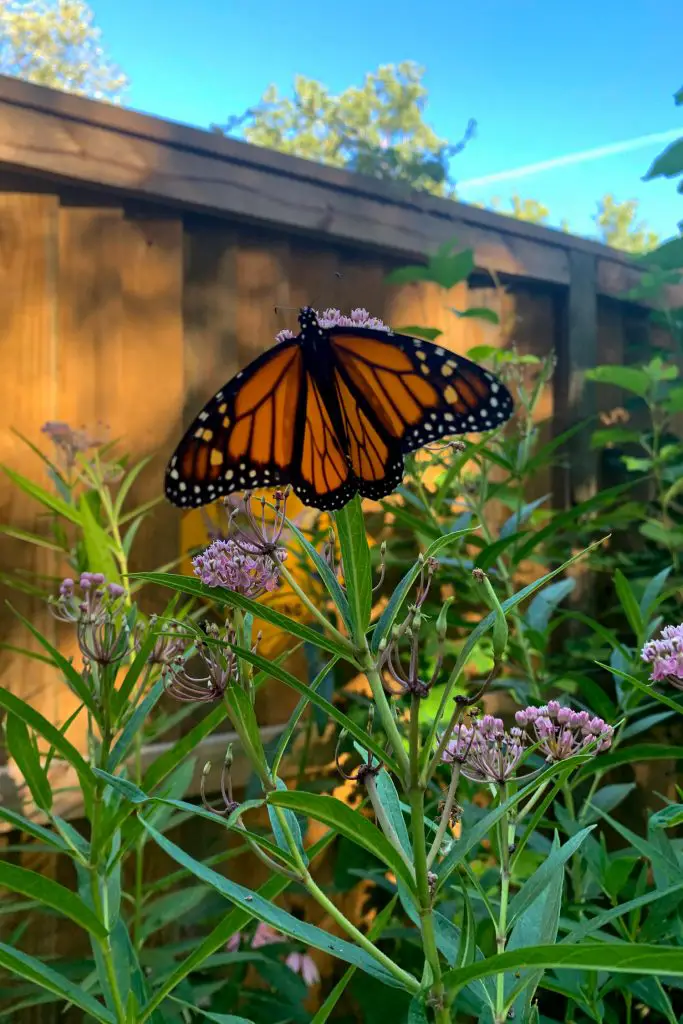
- Milkweed attracts and supports monarch butterflies. By planting milkweed, you can provide a critical habitat for monarch butterflies and support their population.
- Milkweed provides food for pollinators. Milkweed is an important source of nectar for a variety of pollinators, including bees, butterflies, and hummingbirds.
- Milkweed adds to your garden design! It has attractive flowers that come in a variety of colors and can add color and beauty to your garden.
- Milkweed supports other wildlife. Aside from monarchs and pollinators, milkweed is an important host plant for a variety of insects and provides food for birds and other wildlife. Other insects that feed on milkweed include milkweed bugs, milkweed beetles, aphids, milkweed tussock moth, oleander aphid, spider mites and bees and moths.
- Milkweed promotes biodiversity: By planting milkweed, you can help promote biodiversity in your area and support the overall health of the ecosystem.
Overall, planting milkweed is an easy and effective way to support wildlife AND enhance the beauty of your garden.
Our family really loves growing milkweed, hunting for monarch eggs, and bringing them inside to raise the monarchs from egg to butterfly.
How do I grow milkweed from seeds or cuttings?
Milkweed is super easy to grow! You can find it at local nurseries that carry native plants, but it’s so fun to grow from seed on your own.
To get started, you can buy milkweed seeds or join facebook groups where people trade seeds from their gardens for free. There’s actually quite a community of native gardeners online who are willing to help you get started!
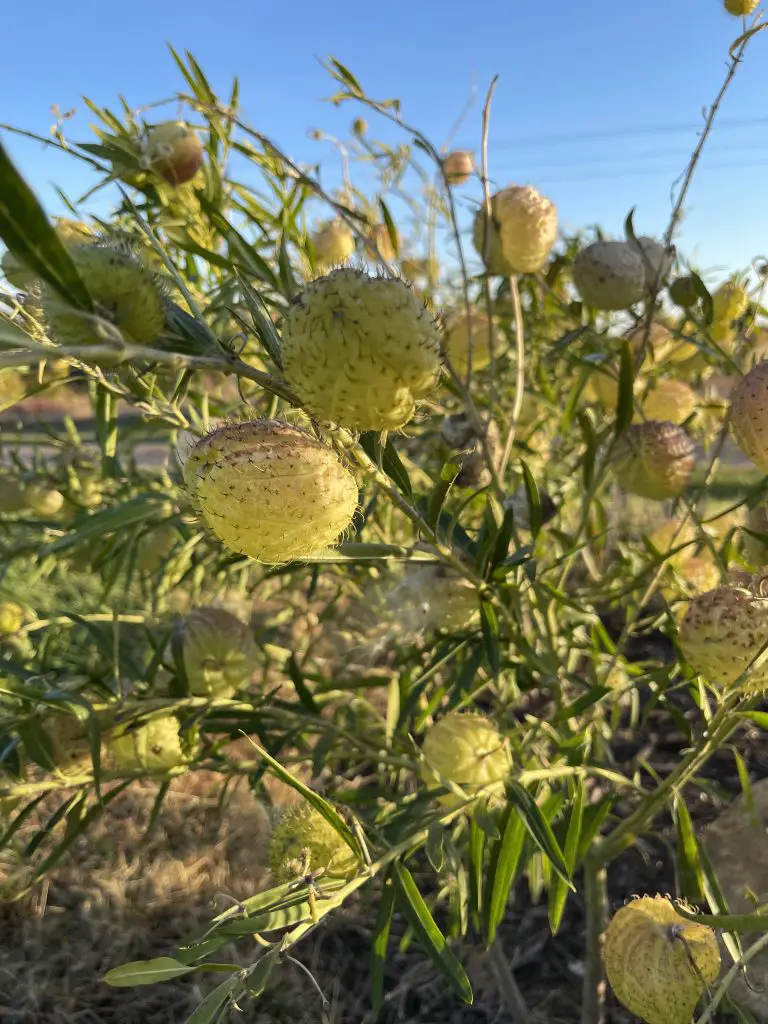
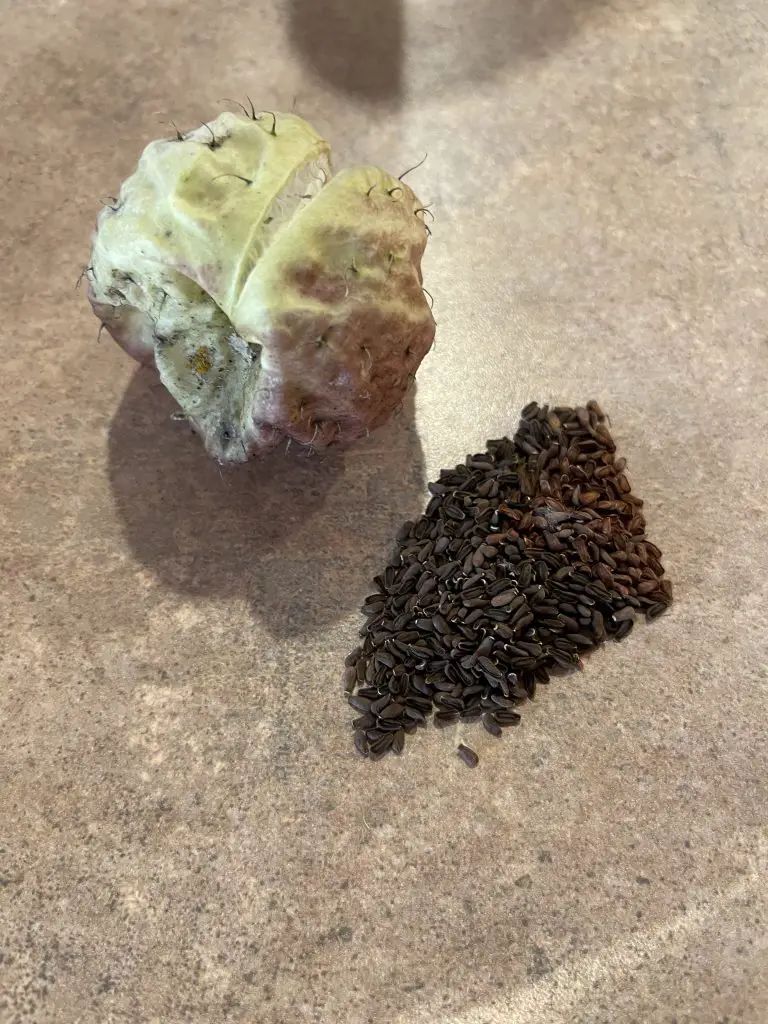
Once you have your own milkweed plants, you can harvest the seeds in the fall and start more milkweed plants from those. If you’re growing milkweed species native to your area, they will come back the next year – so you can plant more or share with your friends!
Every year I have more people ask me about butterfly gardening when they see me sharing about it on social media, and it’s always fun to have spare plants to share!
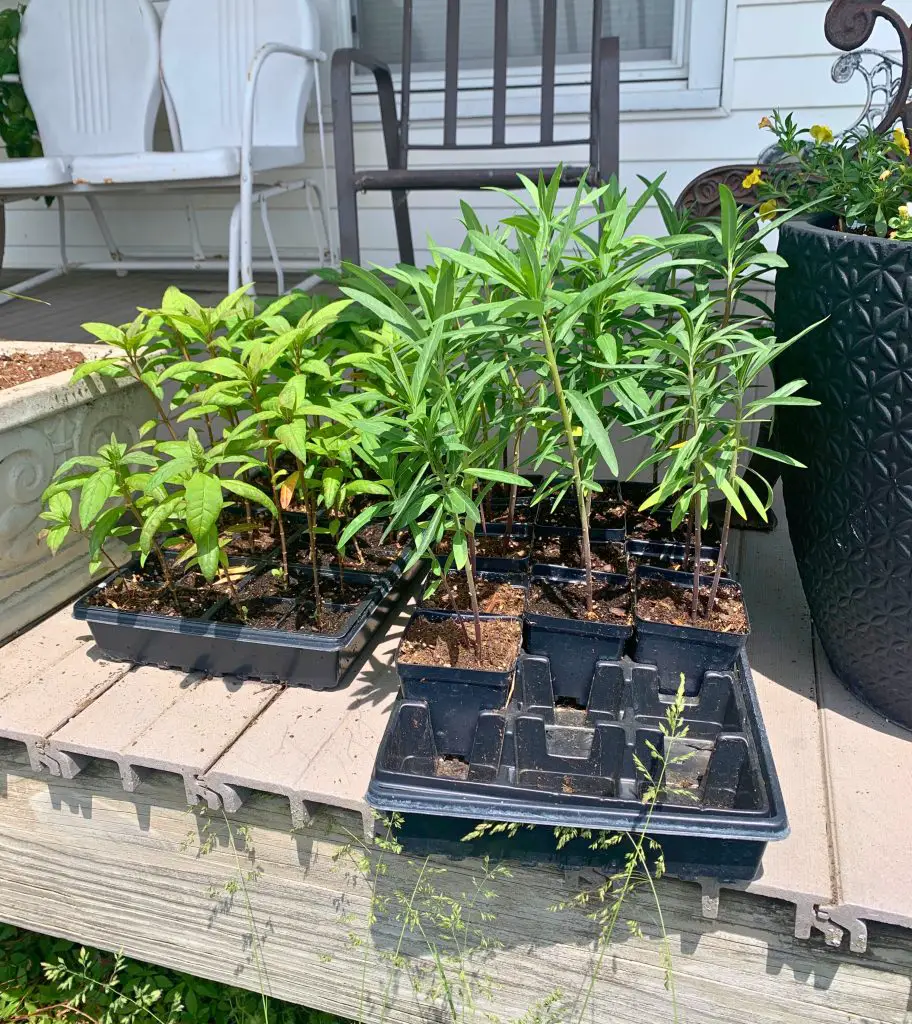
Admittedly my mom does the starting from seed, and I do the sharing, ha! (Thanks, mom!)
When is the best time to plant milkweed?
The best time to plant milkweed depends on the location, however it’s best to plant milkweed in the ground in the spring after the last frost date for your area. This allows the plant to establish its roots and grow throughout the growing season.
Milkweed seeds do require a period of cold stratification to germinate, which means they need to be exposed to cold temperatures for a certain period of time before planting. This mimics the natural winter conditions that milkweed seeds experience in the wild. If you’re starting your milkweed from seed, it’s best to start the cold stratification process in the late fall or early winter, so the seeds are ready to plant in the spring.
One way to do that is to plant your milkweed seeds in plastic milk jugs and set the containers outside for the winter. This process of growing milkweed is called winter sowing.
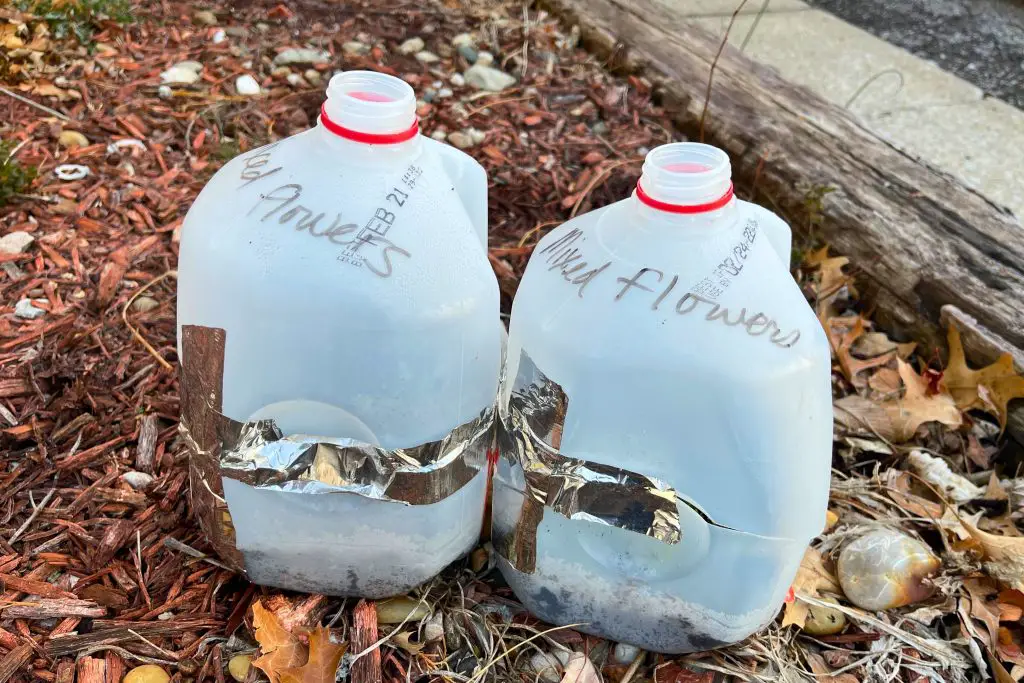
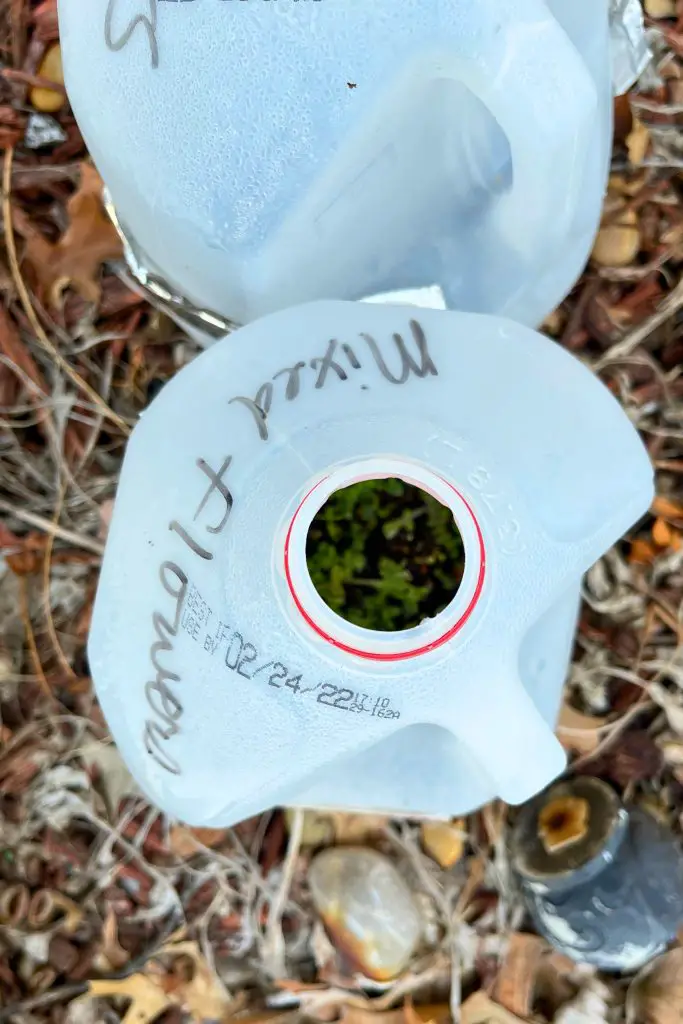
Just cut the milk jug in half, plant the seeds in soil, then tape the jug back together and place it outside in a sunny area.
Be sure to water your plants periodically, but before long you’ll notice new sprouts in your jug! Transplant them into your garden after the last frost date of your area.
How do I care for milkweed plants?
Here are some tips for caring for milkweed plants:
- Soil: Milkweed plants prefer well-draining soil, so avoid planting in areas with standing water or heavy clay soils. Adding compost or other organic matter to the soil can improve drainage and provide additional nutrients.
- Watering: Milkweed plants prefer regular watering, especially during periods of drought. However, be careful not to overwater, as this can lead to root rot. Water deeply and infrequently to encourage deep root growth. Milkweed grow natively through most of North America, so native varieties may not need much extra watering, but your plants may grow more full if you water them in times of drought.
- Sunlight: Most milkweed species prefer full sun to partial shade. Plant in a location that receives at least 6 hours of direct sunlight per day.
- Fertilizer: Milkweed plants don’t require heavy fertilization, but adding a slow-release fertilizer in the spring can help boost growth.
- Pests and diseases: Milkweed plants are relatively pest and disease-resistant, but keep an eye out for aphids, milkweed bugs, and spider mites, which can occasionally infest the plant. Handpicking or spraying with insecticidal soap can help control these pests.
- Maintenance: Remove dead or damaged leaves and stems as needed. In the fall, cut back the plant to 2-3 inches above the soil line to promote healthy regrowth the following spring.
- Monarch butterflies: If you’re planting milkweed to attract monarch butterflies, make sure to leave plenty of space between plants, as monarch caterpillars can quickly strip a milkweed plant of its leaves.
How do I attract monarch butterflies to my milkweed plants?
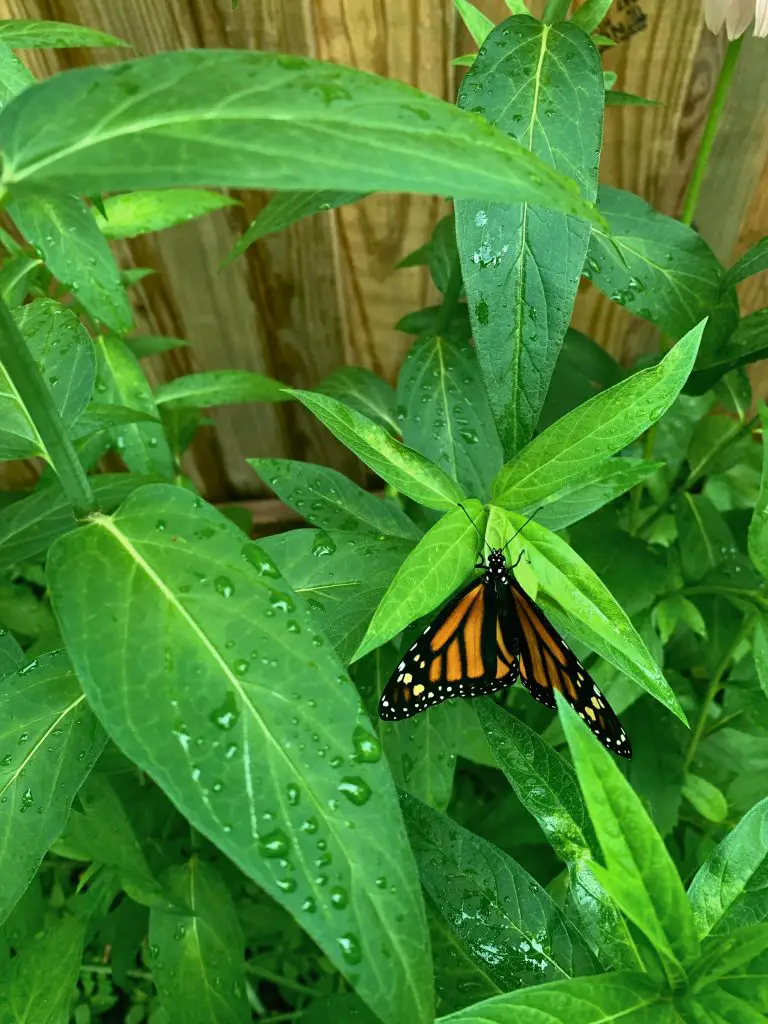
Plant it and they will come. Butterflies will instinctively find the host plants their caterpillars feed on.
Some butterflies have a strong sense of smell and can detect chemical cues, such as pheromones, emitted by the host plants. Others rely on visual cues and recognize the shape, color, and texture of the leaves and flowers of their host plants. Some use a combination of both methods.
Raising monarchs is one of our very favorite things about having milkweed in our gardens!
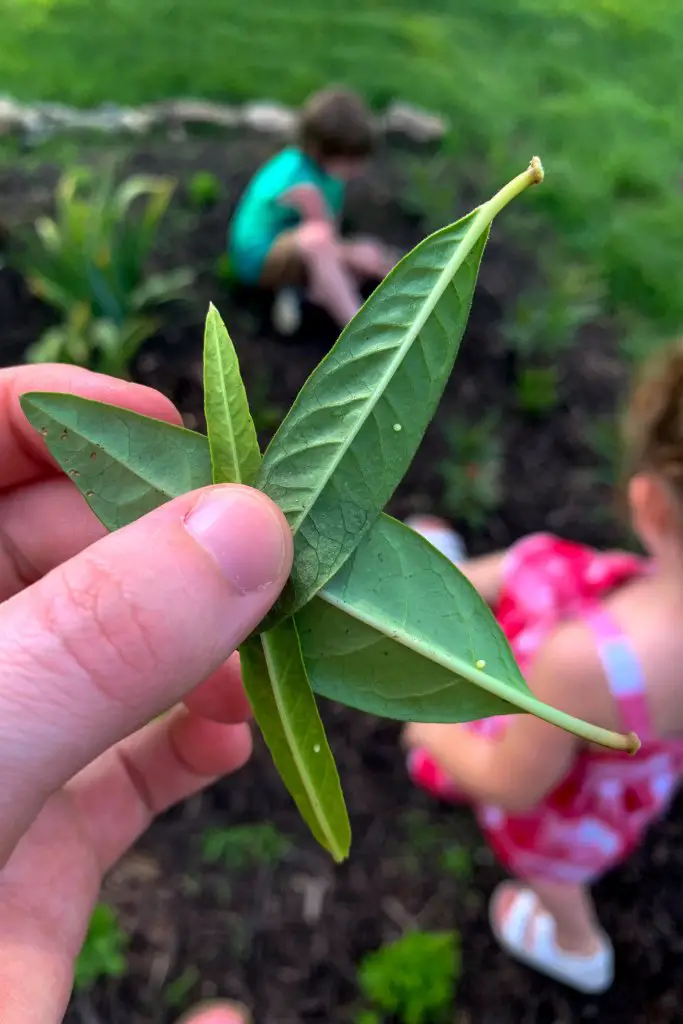
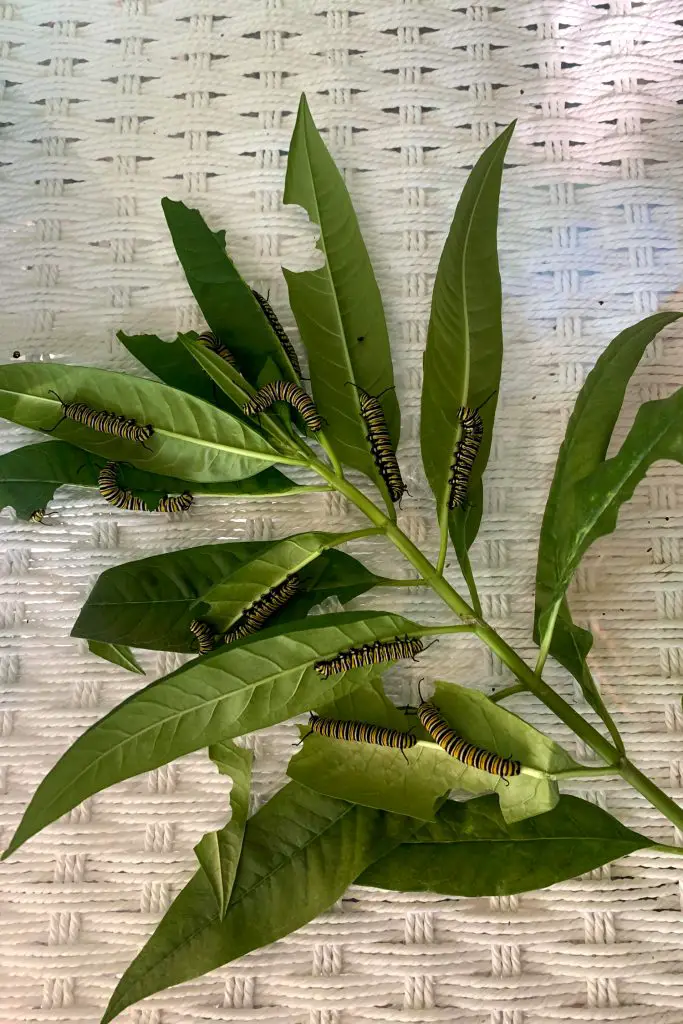
Another way to make your butterfly garden more appealing to butterflies is to plant nectar plants alongside your milkweed plants.
Here are 10 nectar plants that are native to Missouri and are great additions to a butterfly garden:
- Purple Coneflower (Echinacea purpurea)
- Black-eyed Susan (Rudbeckia hirta)
- Joe-Pye Weed (Eutrochium spp.)
- Butterfly Weed (Asclepias tuberosa)
- Ironweed (Vernonia fasciculata)
- Bee Balm (Monarda fistulosa)
- Blazing Star (Liatris spp.)
- New England Aster (Symphyotrichum novae-angliae)
- Wild Bergamot (Monarda fistulosa)
- Mountain Mint (Pycnanthemum spp.)
These plants not only provide nectar for adult butterflies, but they also provide shelter and food for their caterpillars. Plants native to the area you live in are easier to grow and maintain, and they’re great for the environment!
When creating a butterfly garden, keep in mind that butterflies prefer nectar plants planted in large groups of the same plants rather than dispersed randomly. This helps them find and feed on their favorite blooms!
Once a butterfly identifies a host plant, it lays its eggs on the leaves or stems, and the caterpillars hatch and start feeding on the plant. The cycle continues and more butterflies find your plants!
Can I grow milkweed in containers or indoors?
Yes! Milkweed is easy to start from seed indoors and can also be planted in planters. It will continue to grow big and attract monarchs if it’s placed outside. Potted milkweed will act more like an annual plant and will die once the weather cools off.
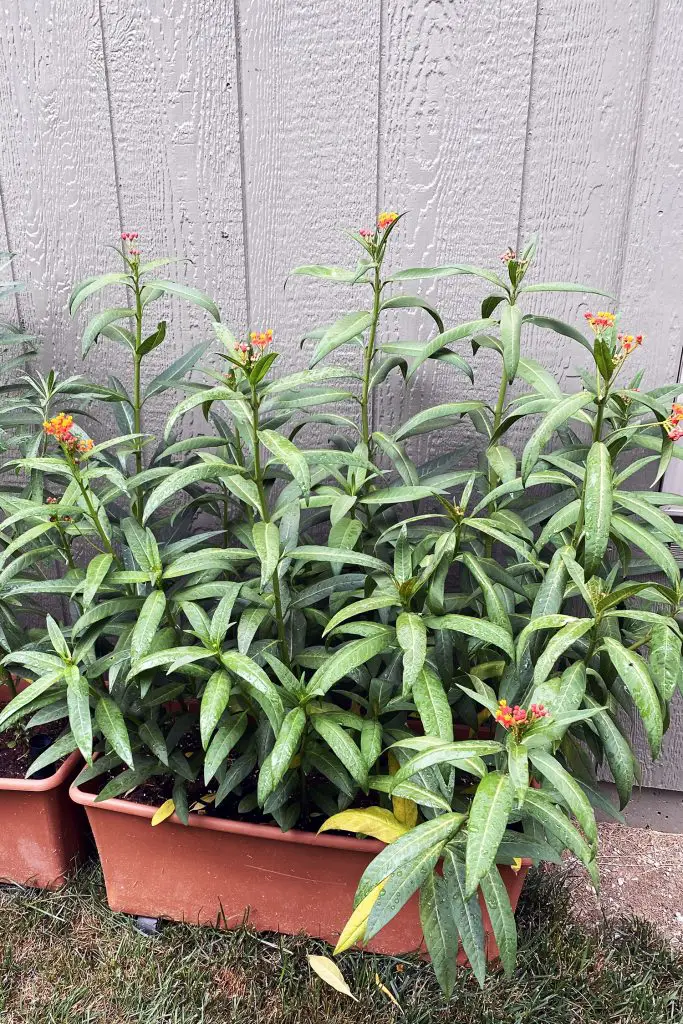
Since it requires a period of cold to go dormant over the winter, keeping milkweed alive indoors year round isn’t ideal.
What are some common problems or pests that affect milkweed plants?
While milkweed plants are generally hardy and relatively pest-resistant, there are a few common problems and pests that can affect them. Here are a few examples:
- Aphids: Aphids are small, soft-bodied insects that feed on the sap of milkweed plants. They can be particularly problematic for young plants, causing yellowing leaves and stunted growth. Spraying with insecticidal soap or neem oil can help control aphids. You can also order ladybugs from amazon and allow them to feed on the aphids on your plants.
- Milkweed bugs: Milkweed bugs are brightly colored insects that feed on the seeds and pods of milkweed plants. They don’t usually cause much damage to the plant, but most gardeners consider them a nusance. Handpicking or vacuuming the bugs can help control their populations.
- Spider mites: Spider mites are tiny insects that feed on the leaves of milkweed plants, causing yellowing and wilting. They can be hard to see, but may notice the webs they make on the plant. Spraying with a strong jet of water or insecticidal soap can help control spider mites.
- Fungal diseases: Milkweed plants can be susceptible to a few different fungal diseases, including powdery mildew and verticillium wilt. These diseases can cause yellowing leaves, wilting, and stunted growth. Fungicides can help control fungal diseases, but prevention is the best strategy. Avoid overcrowding plants, provide good air circulation, and avoid overhead watering.
By keeping an eye out for these common problems and pests, and taking action to control them when necessary, you can help ensure the health and longevity of your milkweed plants.
Are there any concerns or risks associated with growing milkweed, such as toxicity or invasiveness?
Some species of milkweed can be invasive. Research the native milkweed in your area before planting. If you choose an invasive species in your area, it will be hard to contain and will likely quickly outgrow its designated area, and may make it difficult for other surrounding native plants to survive.
The sap in milkweed leaves is toxic and can be harmful if you get it in your eyes or ingest it. Don’t touch your face or eyes while tending to milkweed plants and be sure to wash your hands immediately after.
5 more interesting facts about milkweed:
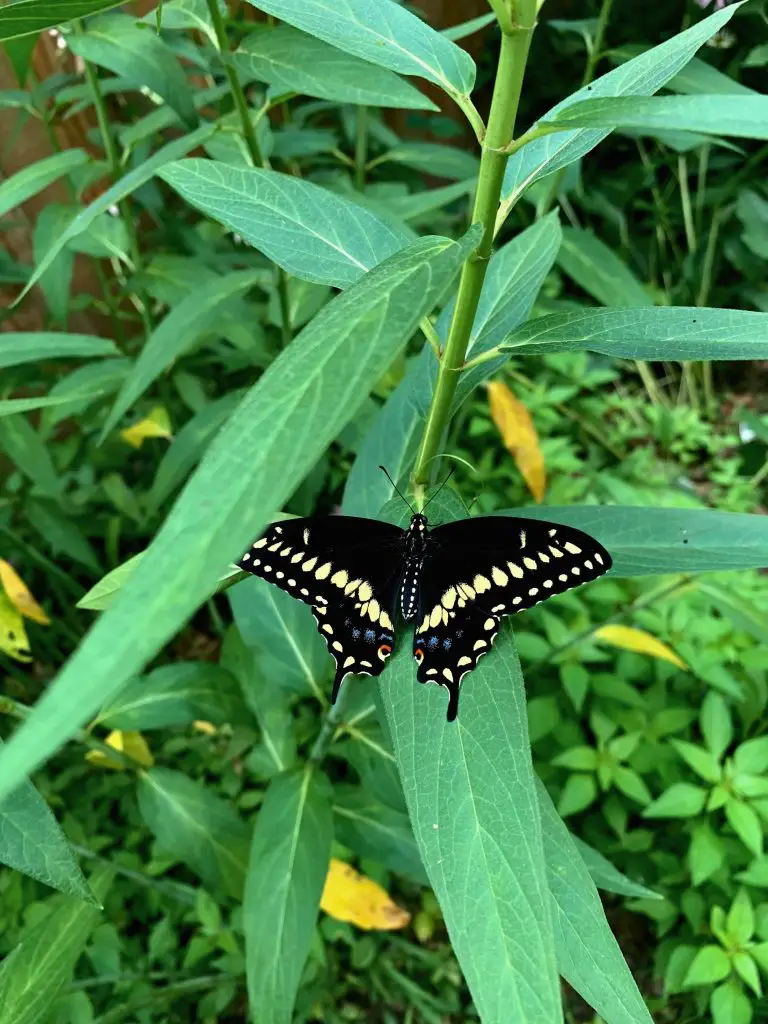
- Milkweed plants produce a toxic sap that can be harmful to humans and animals if ingested, but it also serves as a defense mechanism against predators.
- Milkweed flowers are known for their unique structure, with a complex system of petals and a central structure called the corona that contains nectar.
- Milkweed seeds are contained in pods that split open when ripe, releasing hundreds of seeds with silky hairs that help them disperse in the wind.
- The fibers from milkweed seeds were used by Native Americans to make cordage and fabric.
- Milkweed has a variety of medicinal uses, and various parts of the plant have been used to treat ailments such as warts, coughs, and asthma.

